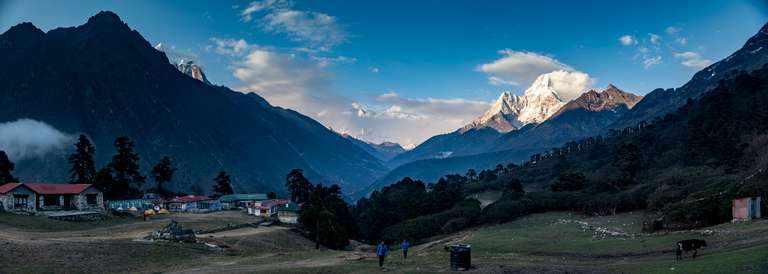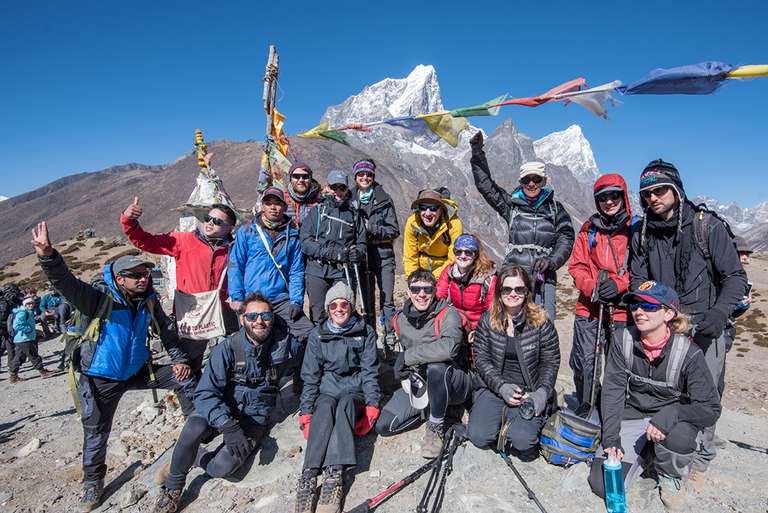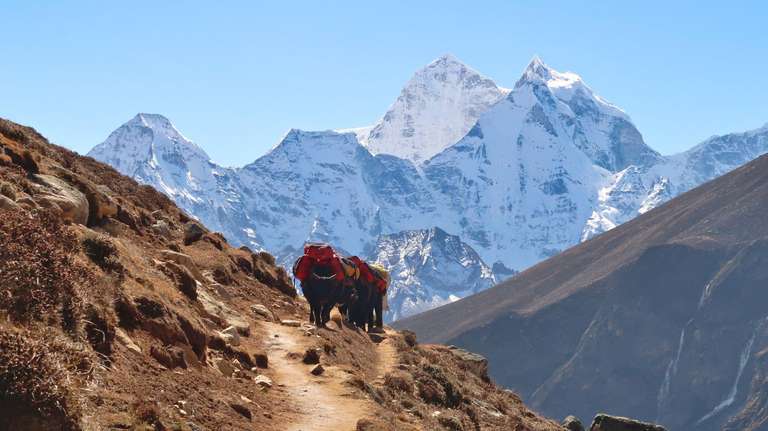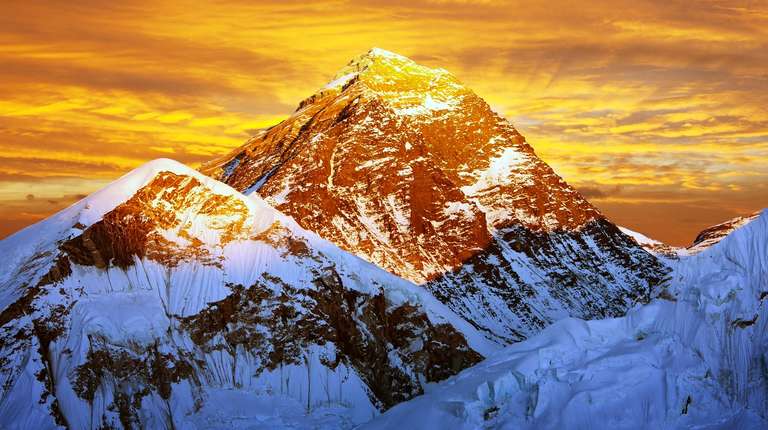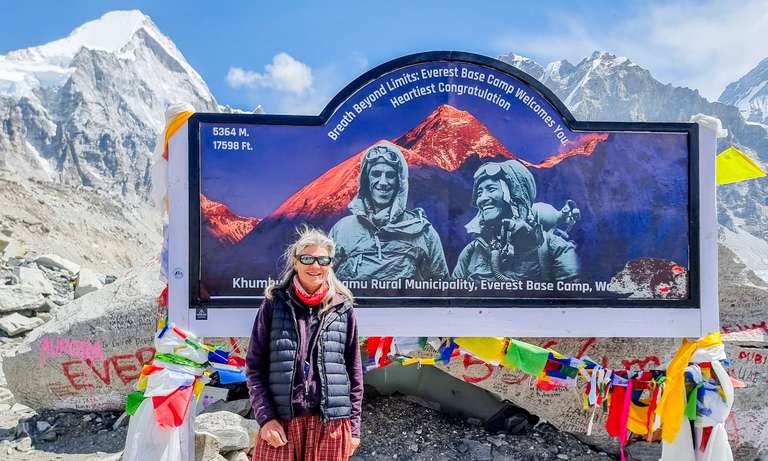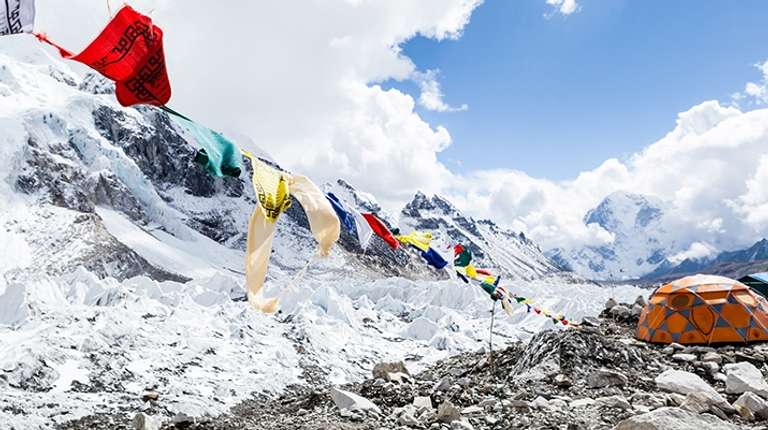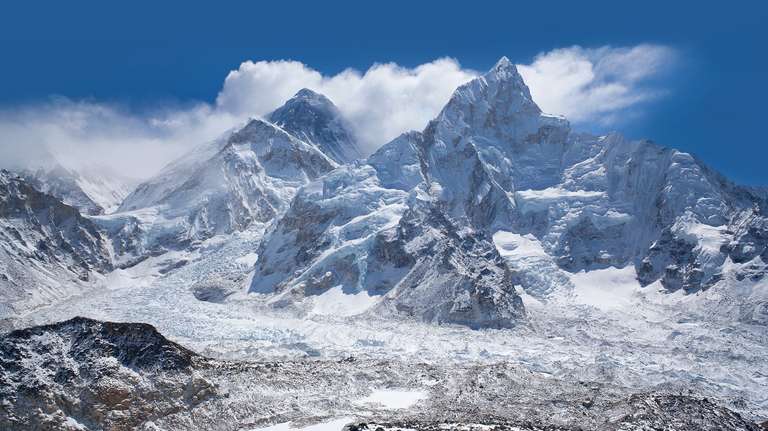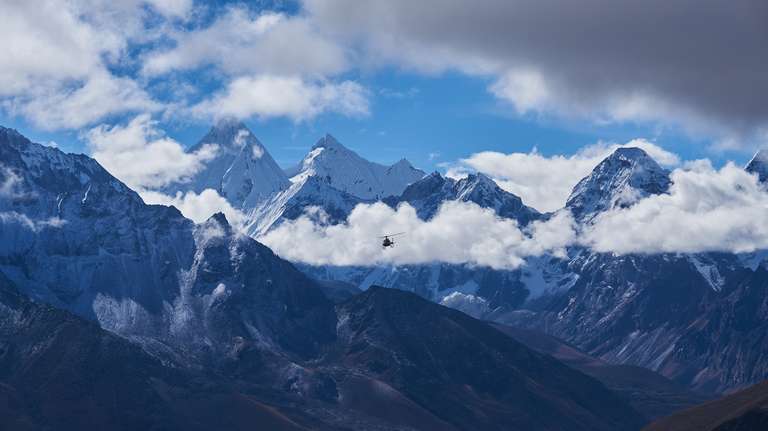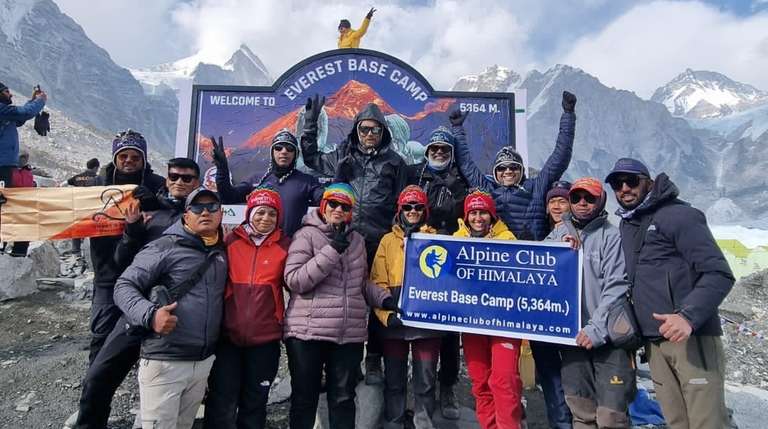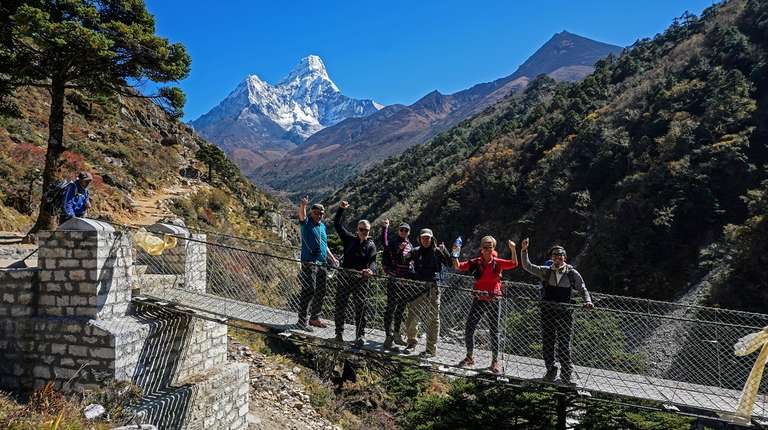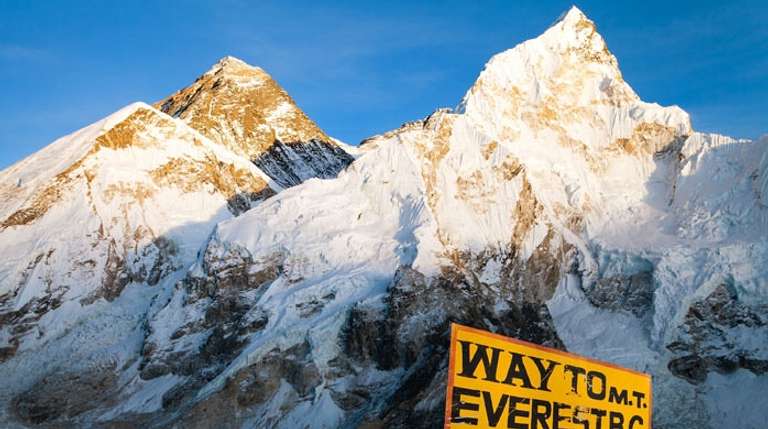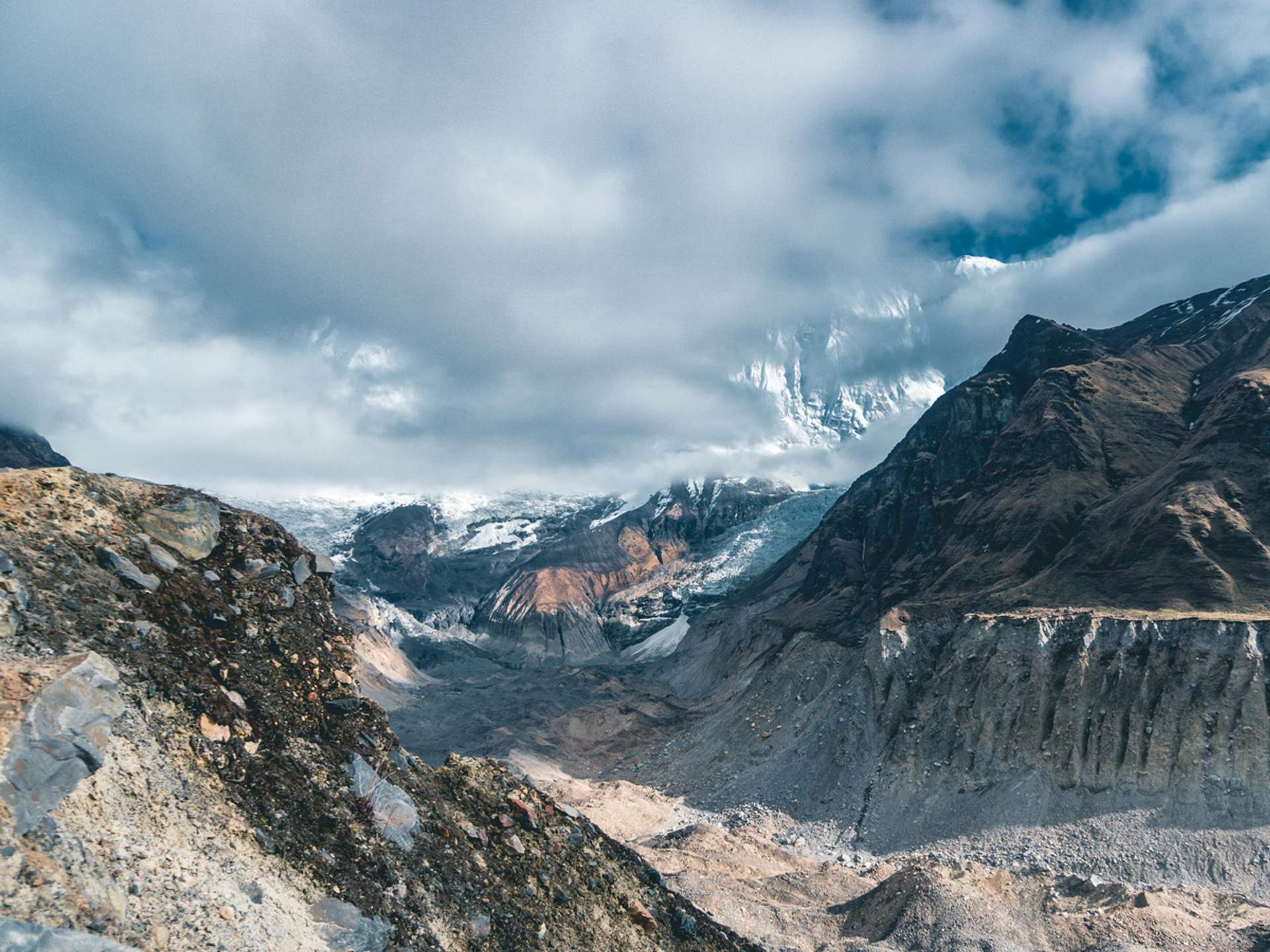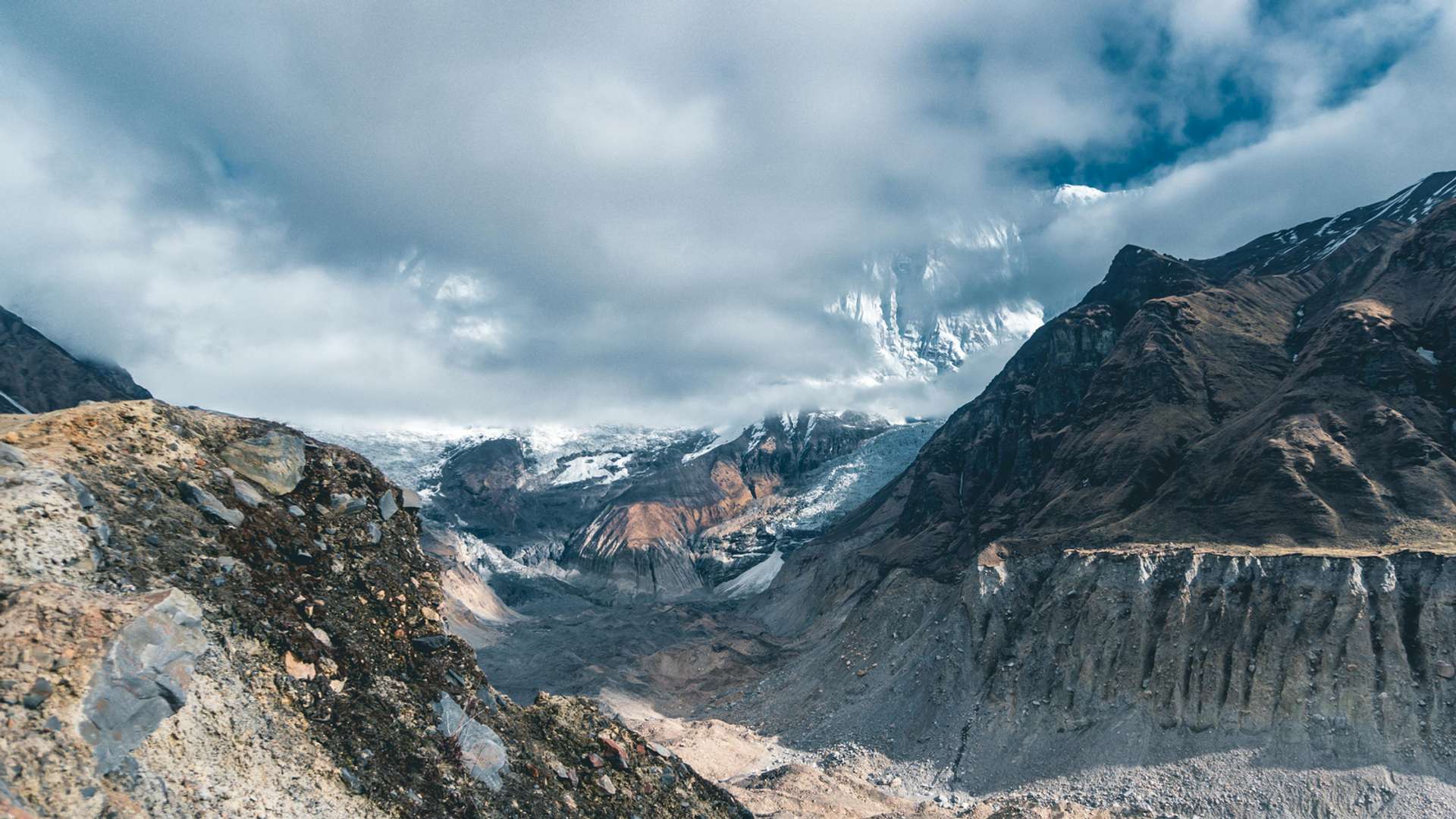
Everest Base Camp Trek
The Everest Base Camp trek, also known as the EBC trek, is arguably the most dramatic and awe-inspiring trek in Nepal, if not in the world. Stand face to face with Mount Everest (Sagarmatha in Nepali) at 8,848 meters. Follow in the footsteps of great mountaineers such as Edmund Hillary and Tenzing Norgay, who were inspired to conquer Everest's summit. Below, we have a comprehensive selection of more than 80 trekking packages, offered by some of the best travel experts in the region.
We guarantee the best prices on all our tours. If you find a lower price within 24 hours of booking, we'll match it.
Note: Prices may vary based on availability and demand.
10 Best Everest Base Camp trek New Year 2026 Deals
Grab our exclusive New Year 2026 Deals on Everest Base Camp trek tours — limited-time massive discounts you won't want to miss!
See all Nepal New Year 2026 Deals
10 Best Tours in Everest Base Camp trek
Discover our highly acclaimed tours in Everest Base Camp trek, based on reviews and times booked.
See all Everest Base Camp trek Tours
Everest Base Camp trek Tour Reviews
Guest reviews from travelers on tours in and around Everest Base Camp trek
This trek was incredible! Sanjay and the team did an amazing job of safely getting the group to Everest base camp and a couple of us to the top of Kala Patthar. I would highly recommend using World Expeditions for lots of reasons but 3 big ones are: 1) They cook all the food - this ensured that is was tasty and safe and no one in our group got sick, 2) mostly staying in their own campsites - the tents were really cosy and 3) the people - from the guides to the porters - were all amazing and local.
Our guide, Anand, and his crew made the trip special. We had some serious rain and snow which was very challenging, but he made the trip fantastic anyway. Highly recommended!
Would highly recommend World expedition. The team led by randeep were fantastic. The boys looked after our every need and made sure we were well looked after and safe.
The whole experience was absolutely amazing, even though it was just the two of us on the tour. Everything was perfectly organized, and we got to enjoy a more personal and flexible experience. Our tour leader made the trip even more special with their knowledge, enthusiasm, and warm personality. They took great care to tailor the journey to our interests, making every stop meaningful. It truly felt like a private adventure, and we couldn’t have asked for a better guide or experience.
World Expeditions is truly the best company with genuine care and compassionate staff. We joined the Everest Base Camp Trek from 01 October to 17 October 2025, and it was an unforgettable experience, a dream come true. Special thanks to our Tour Leader, Mr. Roy, for being so professional, disciplined, and experienced in handling the group. We truly appreciate his leadership and guidance throughout the journey. Our sincere gratitude also goes to Mr. Mayaliah, Mr. Santos, and Mr. Birbal, all very professional guides with great attitudes. You treated every guest with full attention to detail, fulfilling both our expressed and unexpressed needs. The food provided was excellent, and the tents were always clean and comfortable. I felt truly happy, safe, and blessed throughout the trip. Thank you, World Expeditions, for making this journey one of the most memorable experiences of my life.
We are a husband and wife team who joined the over-55 Everest Base Camp 21-day tour and absolutely loved it. We had great weather, very comfortable accommodation, and a pace that was perfectly manageable thanks to our excellent guides. The food was varied and of a very high standard — there was never a shortage of tea or boiled water. The team of guides, porters, and cooks couldn’t do enough to make us feel safe, comfortable, and ready for the next day’s walk. Our leader, Pinout, was incredible — very knowledgeable about the region, history, and culture, and always happy to share his insights. He was caring, supportive, and strong as a leader. When we woke to bad weather at EBC, the team quickly adjusted our itinerary and led us safely down the mountain through the snow. Nothing was ever too much trouble. We also watched as the team supported another guest who needed help — well done to Demish and Pinout for their professionalism and kindness. It was a truly great experience, and we look forward to more adventures with this wonderful company.
Traveler Photos For Trips in Everest Base Camp trek
Create a customized tour to Everest Base Camp trek and Nepal
Traveling to Everest Base Camp trek? Chat with a local travel specialist who can help organize your trip.
Frequently Asked Questions about traveling to Everest Base Camp trek
Find answers to the most asked questions about tours in Everest Base Camp trek
Keep Exploring Everest Base Camp trek
Related Destinations
Trending Travel Guides
- Trekking Seasons in Nepal
- Altitude Illness while Trekking in Nepal
- Health and Safety while Trekking, Including Altitude Sickness
- What to Pack for Trekking? Equipment Guide
- Top 14 Best Treks in Nepal
- Things to Do in Nepal
- Best Time To Visit Nepal
- Great Nepal Itineraries: How Many Days to Spend?
- Nepal in 7 Days: 5 Recommended 7-Day Itineraries to Nepal
- Nepal in 10 Days: 5 Recommended 10-Day Itineraries to Nepal
- Nepal in September: The Start of Fall Season
- Nepal in 5 Days: 3 Recommended 5-Day Itineraries to Nepal
- Top 15 Places to Visit in Nepal
- Short Everest Base Camp Trek: Top 3 Recommendations
- Best Time To Trek To Everest Base Camp
- Everest Base Camp Trek in March
- Everest Base Camp Trek in April: Weather, New Year and More
- Everest Base Camp Trek in May: Weather, Tips and More
- Everest Base Camp Trek in October
- Everest Base Camp Trek in November
- How Much Does it Cost to Trek to Everest Base Camp?
- Winter in Nepal: Weather Tips and Top Destinations
- Nepal in January: Weather, Deals and More
- Planning a Trip to Nepal: A Perfect Holiday

